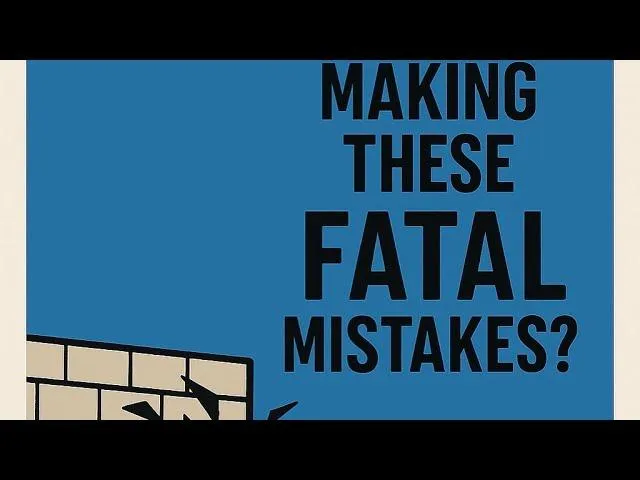Wholesale Pricing Presale Pre-Bulbed and Pre-Clipped Christmas Lights Strands
Pre-Season Wholesale Pre-Bulbed and Pre-Clipped C9 12" Spacing 100' Christmas Lights Strand
Looking for the cheapest & easiest Christmas lights at wholesale pricing?
Just purchase before February 15, 2025 and save on our pre-bulbed and pre-clipped Christmas Lights strands.
Say goodbye to complicated installations with our C9 Pre-Clipped LED Christmas Light Strands! Designed for both professional installers and homeowners, these 100-foot strands arrive with bulbs and clips already attached, making holiday decorating faster and easier than ever. Unbox and hang for a stunning display. Available with Commercial Elite or Minleon bulbs.
Includes:
100 C9 LED Bulbs: Choose from Minleon or Commercial Elite Bulbs
100 C9 Clips of Your Choice: Choose from Best Clips, Tuff Clips, or Flex Clips
100' C9 12" Spacing Green Socket Wire: Durable, flexible wire with optimal spacing for balanced illumination.
1 Male Plug: Included for a seamless power connection.
Pre-Season Wholesale Pre-Bulbed and Pre-Clipped C9 15" Spacing 100' Christmas Lights Strand
Need affordable and easy-to-install Christmas lights? Order our pre-bulbed and pre-clipped light strands at wholesale pricing—save before February 15, 2025!
Say goodbye to complicated installations with our C9 Pre-Clipped LED Christmas Light Strands! Designed for both professional installers and homeowners, these 100-foot strands arrive with bulbs and clips already attached, making holiday decorating faster and easier than ever. Unbox and hang for a stunning display. Available with Commercial Elite or Minleon bulbs.
Key Features:
100 C9 Commercial Elite or Minleon V2 Bulbs
100 C9 Clips of Your Choice: Choose from Best Clips, Tuff Clips, or Flex Clips
125' C9 15" Spacing Green Socket Wire: Durable, flexible wire with optimal spacing for balanced illumination.
1 Male Plug: Included for a seamless power connection.
Pre-Season Wholesale Pre-Bulbed and Pre-Clipped C7 12" Spacing 100' Christmas Lights Strand
Looking for the cheapest & easiest Christmas lights at wholesale pricing?
Just purchase before February 15, 2025 and save on our pre-bulbed and pre-clipped Christmas Lights strands.
Say goodbye to complicated installations with our C7 Pre-Clipped and Pre-Bulbed LED Christmas Light Strands! Designed for both professional installers and homeowners, these 100-foot strands arrive with bulbs and clips already attached, making holiday decorating faster and easier than ever. Unbox and hang for a stunning display. Available with SMD or Minleon bulbs.
Key Features:
100 C7 SMD or Minleon Bulbs
100 C7 Best Clips or Flex Clips
100' C7 12" Spacing Green Socket
1 Male Plug
Frequently Asked Questions
What are pre-bulbed and pre-clipped Christmas lights?
Pre-bulbed and pre-clipped Christmas light strands come with bulbs and clips already attached, making them easy to install. Simply unbox and hang for a quick and stunning holiday display.
What bulb options are available?
These strands include C9 bulbs and are available with Commercial Elite or Minleon bulbs in colors such as Warm White, Sun Warm White, and Multi-Color.
What clips are included with the strands?
Choose from Best Clips, Tuff Clips, or Flex Clips to suit your installation needs, ensuring a secure and professional finish.
Are these strands suitable for outdoor use?
Yes, these strands are made with durable materials, including green socket wire and high-quality clips, making them ideal for both indoor and outdoor holiday displays.
What are the benefits of pre-bulbed and pre-clipped Christmas lights?
Pre-bulbed and pre-clipped lights save time and effort, as the bulbs and clips are already attached to the strands. This simplifies installation and ensures a professional, polished look for your holiday displays.
Discover Expert Tips on Our Blog

Business Growth Reality Check: Are You Making These Fatal Mistakes?
Building a successful service business requires more than just technical expertise and hard work. Many entrepreneurs find themselves trapped at certain revenue levels, unable to break through to the next stage of growth. The difference between businesses that scale successfully and those that remain stagnant often comes down to avoiding critical mistakes that can kill long-term growth potential.
Understanding these fatal mistakes and learning how to overcome them can transform your business from a job that owns you into a scalable enterprise that provides true financial freedom. Whether you're operating a pressure washing company, offering Christmas light installation services, or running any other service-based business, these principles apply universally.
Fatal Mistake #1: Working IN the Business Instead of ON the Business
The Truck Trap
The most common and devastating mistake service business owners make is their inability to transition from technician to business owner. This manifests most clearly in what industry experts call "the truck trap" – when owners remain physically present on every job, handling day-to-day operations instead of focusing on business growth activities.
When you're physically performing the work, you're essentially paying yourself to do $20-per-hour tasks that could easily be delegated to employees. This limitation typically caps business growth at around $200,000-$300,000 annually because there are only so many hours in a day, and your personal capacity becomes the bottleneck for all growth.
The Hidden Costs of Hands-On Management
Working in the business instead of on it prevents you from engaging in the high-value activities that actually drive growth. While you're operating equipment or managing job sites, you're not networking with potential clients, developing marketing strategies, building systems, or handling the strategic planning that separates successful businesses from struggling ones.
The challenge is that hands-on work provides immediate gratification and clear metrics for success. You can see the immediate results of your labor, which makes it psychologically satisfying. However, the activities that truly grow your business – relationship building, system development, strategic planning – often take longer to show results and can feel less tangible.
Breaking Free from Operational Dependence
Successfully transitioning from technician to business owner requires a fundamental mindset shift. You must begin viewing yourself as the CEO of your company rather than its primary worker. This means focusing your time and energy on activities that only you can do while delegating everything else to capable team members.
The transition isn't always smooth or immediate. Many successful business owners report that it took several years to fully remove themselves from day-to-day operations. However, those who make this transition consistently report that their businesses experienced significant growth acceleration once they focused entirely on strategic activities.
Fatal Mistake #2: Believing No One Can Do It As Well As You
The Perfectionist's Paradox
The second major growth killer is the belief that no one else can perform the work to your standards. This limiting belief manifests in statements like "there are no good employees available" or "customers expect me personally to handle their jobs." While this mindset might feel like maintaining quality standards, it actually creates a ceiling for business growth.
This perfectionist approach ignores a fundamental truth: with proper training, systems, and incentives, many people can perform technical work at or above your level. In fact, some employees may actually exceed your performance because they can focus entirely on execution without the distractions of business management that occupy your attention.
The Self-Fulfilling Prophecy of Poor Hiring
When business owners constantly complain about the lack of quality employees, they create a self-fulfilling prophecy. Your brain tends to find evidence supporting your existing beliefs, so if you believe good employees don't exist, you'll focus on examples that confirm this bias while overlooking potential quality team members.
The reality is that good employees do exist, but they require competitive compensation, proper training, clear expectations, and effective leadership. If you're struggling to find and retain quality team members, the problem might not be the available talent pool – it might be your approach to hiring, training, or management.
Creating Systems That Enable Success
Instead of expecting employees to intuitively understand your standards, successful business owners create detailed systems and procedures that enable anyone to deliver consistent results. This includes written procedures, quality checklists, training protocols, and clear performance metrics that remove guesswork from job execution.
When you shift from expecting employees to read your mind to providing them with clear systems and expectations, you'll discover that many people can deliver excellent results. This systems-based approach also makes your business more valuable and scalable because it doesn't depend on any single person's expertise or presence.

Fatal Mistake #3: Competing on Price Instead of Value
The Race to the Bottom
One of the most destructive patterns in service businesses is competing primarily on price rather than value. When you make pricing your primary competitive advantage, you enter a race to the bottom that's ultimately impossible to win. There will always be someone willing to work for less, often because they don't understand their true costs or the value they provide.
Price-based competition attracts the worst possible customers – those who prioritize cost savings over quality results. These customers typically demand the most attention, complain the most frequently, and provide the least satisfaction from a business relationship perspective. They're also the first to leave when they find a cheaper alternative.
The Psychology of Value-Based Selling
Successful service businesses understand that customers make purchasing decisions based on emotion and then justify those decisions with logic. Harvard research indicates that approximately 90% of purchasing decisions are made emotionally, yet most service providers focus entirely on logical factors like specifications and pricing.
Value-based selling focuses on the emotional and practical benefits customers receive from your service. Instead of selling pressure washing, you're selling pride in property ownership, time savings, and peace of mind. Instead of selling Christmas light installation, you're selling magical family memories and neighborhood prestige.
Premium Pricing Strategies
When you establish yourself as a premium service provider, several positive changes occur simultaneously. You attract better customers who value quality over price, you have higher profit margins that allow for better employee compensation and business investment, and you create breathing room in your schedule because you need fewer customers to achieve the same revenue.
Premium pricing requires confidence in your value proposition and the ability to communicate that value effectively to potential customers. This means developing strong presentation skills, understanding customer motivations, and being able to articulate the specific benefits and outcomes your service provides.
Fatal Mistake #4: Trying to Serve Everyone
The Generalist's Dilemma
Many service business owners fear turning away potential customers, leading them to offer services to anyone who calls. This "everyone is our customer" mentality actually hurts business growth because it prevents you from becoming truly excellent at serving a specific market segment.
When you try to serve everyone, you become the preferred choice of no one. Generalists typically struggle against specialists who understand specific customer needs and can tailor their services accordingly. The businesses that grow fastest are those that identify a specific niche and become the obvious choice for that particular customer segment.
The 80/20 Rule in Customer Distribution
Most successful businesses discover that approximately 20% of their customers generate 80% of their revenue and satisfaction. These top-tier customers typically share similar characteristics – they value quality, pay promptly, refer others, and are pleasant to work with. Understanding the common traits of your best customers allows you to focus your marketing efforts on attracting more people like them.
This customer concentration isn't coincidental. Your best customers often live in similar neighborhoods, have comparable income levels, share similar values regarding property maintenance, and respond to the same marketing messages. By identifying these patterns, you can dramatically improve your marketing efficiency and customer satisfaction.
Developing Customer Avatars
Creating detailed customer avatars helps you understand exactly who you're trying to serve. This goes beyond basic demographics to include lifestyle factors, values, pain points, and decision-making processes. When you understand your ideal customer deeply, you can tailor everything from your marketing messages to your service delivery to meet their specific needs and preferences.
A clear customer avatar also helps you make better business decisions. When considering new services, marketing channels, or operational changes, you can evaluate them against whether they serve your ideal customer better. This focus prevents you from being distracted by opportunities that might generate revenue but don't align with your core business strategy.

Fatal Mistake #5: Building a Business That Can't Run Without You
The Owner Dependency Problem
The final fatal mistake is creating a business that completely depends on your personal presence and involvement. If your business can't operate for a day, week, or month without you being physically present, you've created a job rather than a business. This dependency becomes dangerous if you become unable to work due to illness, injury, or other life circumstances.
Owner-dependent businesses also have limited value if you ever want to sell or retire. Potential buyers or investors want businesses that can operate successfully without the current owner's involvement. A business that requires your constant presence has little value beyond the immediate cash flow it generates while you're actively working.
The Delegation Challenge
Many business owners struggle with delegation because they believe they can do tasks better, faster, or more accurately than their employees. While this might be true initially, it represents short-term thinking that prevents long-term growth. The goal isn't to find people who can immediately perform at your level – it's to develop systems and training that enable others to achieve excellent results.
Effective delegation requires clear communication of expectations, proper training systems, and the patience to allow others to learn and improve. Some tasks might initially take longer or require revision when delegated, but this investment in team development pays enormous dividends as your business scales.
Building Systems for Scalability
The foundation of a scalable business is comprehensive systems that enable consistent results regardless of who performs the work. This includes documented procedures for every aspect of your business, from customer communication to job execution to quality control. These systems should be detailed enough that a new employee can follow them and achieve acceptable results.
Successful business owners transition from being the person who does everything to being the person who ensures everything gets done correctly. This requires developing leadership skills, creating accountability systems, and learning to measure results rather than activities.
Overcoming These Fatal Mistakes
Honest Self-Assessment
The first step in avoiding these business-killing mistakes is honest self-assessment. Which of these patterns do you recognize in your own business? Are you trapped on the truck? Do you struggle with delegation? Are you competing primarily on price? Understanding your current situation objectively is essential for creating a plan to move forward.
This assessment requires setting aside ego and defensive thinking to examine your business honestly. Many successful entrepreneurs report that recognizing these patterns in their own businesses was initially uncomfortable but ultimately liberating because it provided a clear roadmap for improvement.
Prioritizing Changes
Once you've identified which mistakes you're making, prioritize addressing them based on their impact on your business growth. For most service businesses, getting off the truck and developing delegation skills provide the highest return on investment because they free up your time for high-value activities while building organizational capacity.
Some changes can be implemented simultaneously, while others require sequential development. For example, you might work on improving your value proposition while also developing training systems for employees. The key is maintaining momentum while avoiding the paralysis that can come from trying to change everything at once.
The Long-Term Perspective
Avoiding these fatal mistakes requires adopting a long-term perspective on business development. The activities that drive sustainable growth – team building, system development, relationship cultivation – often take months or years to show their full impact. Short-term thinking keeps you trapped in reactive mode, while long-term thinking enables proactive business building.
Successful business owners understand that building a scalable, valuable business is a marathon rather than a sprint. They're willing to invest time and resources in activities that might not show immediate returns but will compound over time to create substantial competitive advantages.
Building a successful service business requires avoiding these five fatal mistakes while consistently focusing on activities that create long-term value. By working on your business rather than in it, building systems that enable others to succeed, competing on value rather than price, focusing on ideal customers, and creating operational independence, you can transform your business from a job into a valuable asset that provides true financial freedom.
The transition isn't always easy or immediate, but the businesses that make these changes consistently outperform those that remain trapped in these common patterns. Your business has the potential to grow far beyond its current limitations – the key is recognizing and systematically addressing these growth-killing mistakes before they permanently limit your success.

1. How do I know if I'm trapped "working in my business" instead of "on my business"?
You're trapped working in your business if you're personally present on every job, handling day-to-day operations instead of focusing on growth activities. Key indicators include: your business can't operate without you for even a day, you're personally performing $20/hour tasks that could be delegated, you're too busy with operations to network or develop marketing strategies, and your business growth has plateaued around $200,000-$300,000 annually. If removing yourself from daily operations would cause your business to stop functioning, you're working in the business rather than on it. The solution requires transitioning from technician to CEO mindset, focusing on strategic activities like business development, team building, and system creation that only you can do.
2. What should I do if I believe no one can do the work as well as I can?
This perfectionist mindset is actually a limiting belief that prevents business growth. The reality is that with proper training, systems, and incentives, many people can perform technical work at or above your level. Start by creating detailed systems and procedures that enable anyone to deliver consistent results, including written procedures, quality checklists, and clear performance metrics. Instead of expecting employees to intuitively understand your standards, provide them with the tools and training they need to succeed. Remember that good employees do exist, but they require competitive compensation, proper training, and effective leadership. If you're struggling to find quality team members, examine your hiring process, training systems, and management approach rather than assuming good employees don't exist.
3. How can I stop competing on price and start competing on value?
Shift your focus from selling features to selling benefits and outcomes. Instead of selling pressure washing, sell pride in property ownership, time savings, and peace of mind. Understand that 90% of purchasing decisions are made emotionally, so focus on the emotional and practical benefits customers receive. Develop strong presentation skills and learn to articulate specific outcomes your service provides. Create detailed customer avatars to understand what your ideal clients truly value beyond price. Build confidence in your value proposition by documenting results and customer success stories. Remember that price-based competition attracts the worst customers who prioritize cost over quality, while value-based selling attracts customers who appreciate excellent service and are willing to pay appropriately for it.
4. Why is trying to serve everyone actually bad for my business growth?
When you try to serve everyone, you become the preferred choice of no one. Generalists typically struggle against specialists who understand specific customer needs and can tailor their services accordingly. The businesses that grow fastest identify a specific niche and become the obvious choice for that customer segment. Additionally, most successful businesses discover that 20% of their customers generate 80% of their revenue and satisfaction. Your best customers typically share similar characteristics and live in similar areas, so focusing on attracting more people like them dramatically improves marketing efficiency. A "everyone is our customer" mentality prevents you from developing deep expertise in serving specific market segments and dilutes your marketing effectiveness across too many different customer types.
5. What are the signs that my business is too dependent on me personally?
Your business is too dependent on you if it can't operate for a day, week, or month without your physical presence. Warning signs include: all major decisions require your approval, customers specifically request to work with you personally, employee productivity drops significantly when you're not present, you handle all customer communications and problem-solving, and your business would cease functioning if you became unable to work due to illness or injury. This dependency also limits your business value if you ever want to sell or retire, as potential buyers want businesses that can operate successfully without the current owner's involvement. A business that requires your constant presence has little value beyond the immediate cash flow it generates while you're actively working.

6. How do I start delegating tasks when I'm used to doing everything myself?
Start by documenting all your current responsibilities and identifying which tasks only you can do versus those that others could handle with proper training. Begin delegating lower-risk, routine tasks first while developing comprehensive systems and training materials. Create detailed procedures for every aspect of your business that others will handle. Understand that delegation is an investment - tasks might initially take longer or require revision, but this develops team capability over time. Set clear expectations, provide adequate training, and establish accountability systems. Most importantly, resist the urge to take tasks back when they're not done exactly as you would do them. Instead, use these as opportunities to improve your systems and training rather than proof that delegation doesn't work.
7. What's the difference between working harder and working smarter in a service business?
Working harder typically means putting in more hours doing the same activities - working more jobs, extending your schedule, or trying to do everything yourself. Working smarter means focusing on activities that create leverage and long-term value: building systems that enable others to work effectively, developing relationships that generate referrals, creating marketing strategies that attract ideal customers, and designing processes that improve efficiency. Smart work often requires initial time investment that pays dividends later, while hard work usually provides immediate but limited returns. The key distinction is that working harder has natural limits (there are only 24 hours in a day), while working smarter can create exponential growth through systems, teams, and strategic thinking.
8. How can I identify my ideal customer avatar?
Start by analyzing your current best customers - those who pay promptly, value quality, refer others, and are pleasant to work with. Look for common characteristics including demographics (age, income, family status), geographic location (specific neighborhoods or communities), property characteristics (size, value, age), lifestyle factors (busy professionals, retirees, families), and values (quality over price, convenience, status). Also examine their pain points and what motivates them to purchase your services. Create a detailed profile that goes beyond basic demographics to include decision-making processes, preferred communication methods, and what they truly value about your service. This avatar should guide all your marketing efforts and help you make business decisions about new services, marketing channels, and operational changes.
9. What systems should I create first to make my business less dependent on me?
Start with systems that have the highest impact on daily operations: customer communication procedures (how calls are answered, estimates are provided, follow-up is conducted), job execution checklists that ensure consistent service delivery, quality control processes that maintain standards without your presence, and employee training materials for each role in your company. Also develop financial systems for tracking job costs and profitability, scheduling systems that optimize route efficiency, and customer relationship management processes. Document everything in writing with step-by-step procedures that new employees can follow. Begin with the areas where you spend the most time or where inconsistency causes the biggest problems, then systematically work through all aspects of your business operations.
10. How long does it typically take to transition from owner-operator to true business owner?
The transition timeline varies significantly based on business size, complexity, and owner commitment, but most successful business owners report it takes 2-5 years to fully remove themselves from day-to-day operations. The key factors affecting timeline include: how quickly you can develop effective systems and procedures, your ability to hire and train capable team members, your willingness to delegate tasks and accept that others may do things differently, and your discipline in focusing on strategic activities rather than reverting to operational work. Some owners achieve significant delegation within 6-12 months, while others struggle for years because they can't let go of control. The businesses that transition fastest are those that prioritize system development, invest properly in team training, and maintain focus on strategic rather than tactical activities. Remember that this transition is essential for scaling beyond personal capacity limitations.
Copyright ©2025 All Right Reserved website designed by christmaslights.io
Terms of Service / Privacy Policy
Have questions or need assistance?
Contact us at (855)619-LITE





